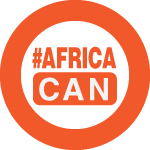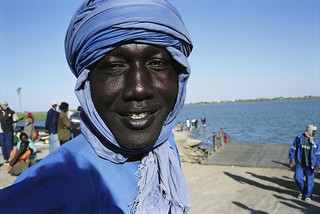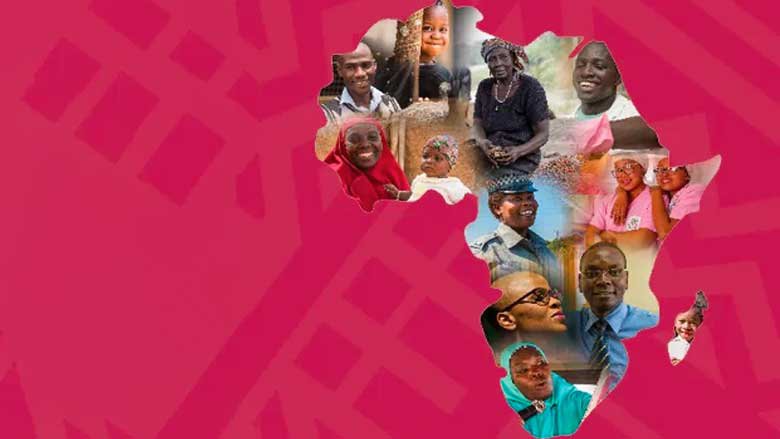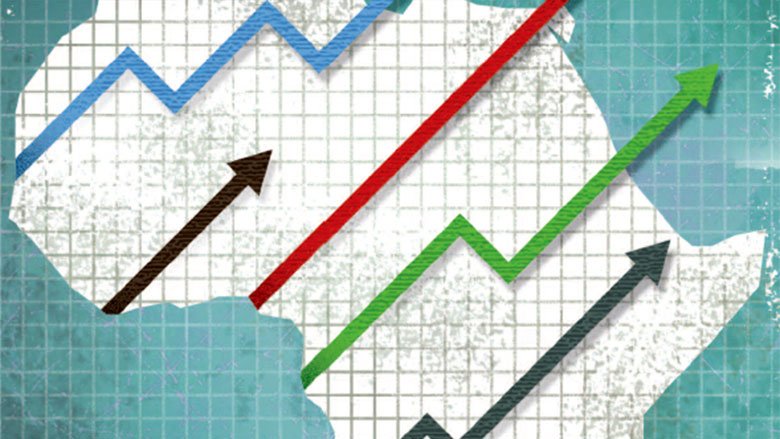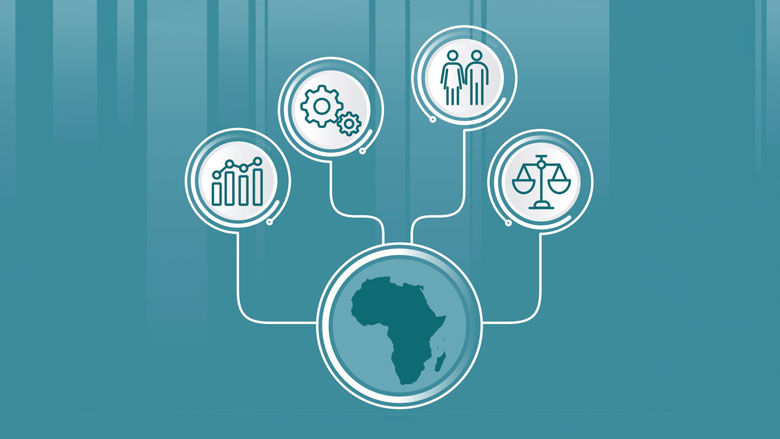Social Safety Nets
In Angola, the Social Protection System Project, known locally as the Kwenda Project, has registered nearly 600,000 households across 18 provinces to receive cash transfers, of which about 60% are female-headed. By 2023, 1.6 million households will be beneficiaries of Kwenda cash transfers which represents all poor households in the country. This would make Kwenda one of the largest cash transfer programs in Sub-Saharan Africa.
In the Democratic Republic of the Congo (DRC), the International Development Association’s (IDA) social protection program, “STEP” (Projet pour la Stabilisation de l’Est de la RDC pour la Paix), has supported poor populations. Its outcomes from February 2014 to December 2022 include improved access to livelihoods for 530,000 beneficiaries—over 200,000 of them women—through cash transfers, cash-for-work, and other safety net activities, disbursing more than $93 million overall. The project supported upgrades of 2,185 community infrastructures, such as schools and clinics, through 950 community-driven development programs and 1,235 public work schemes.
In Liberia, the COVID-19 pandemic exacerbated poverty and threatened livelihoods, and this challenge spurred the expansion and digitization of the government’s ongoing cash transfer program. The Liberia Social Safety Nets Project launched the government’s first-ever urban cash transfer program. It provided emergency cash transfers for close to 15,000 households living in vulnerable communities in the Greater Monrovia area, which had recorded the highest number of COVID-19 cases in Liberia. These households received the cash transfers in their mobile wallet accounts. Up to 70% of cash recipients were women. The project is financed by a $10 million credit from IDA and co-financed by USAID ($5.4 million) and the United Kingdom’s FCDO ($3.5 million).
In Somalia, the Baxnaano program has provided a platform for the government to play a role in social safety net provision to households facing chronic poverty and the aggravating impacts of multiple, climate-related shocks. In the first two years of Baxnaano-Regular’s implementation, about 200,000 households (over one million individuals) benefited from its predictable, nutrition-linked Universal Cash Transfers. Women accounted for 100% of its direct recipients, nearly 40% of them using SIM cards for the first time—a major step in financial inclusion for poor women in Somalia. Nearly 100,000 households (about 600,000 individuals) received livelihood protection through monthly Baxnaano-Shock Electronic Cash Transfers during the locust crisis; 72% of its direct recipients were women.
In South Sudan, the Safety Net Project has improved the livelihoods and resilience of thousands, providing temporary income opportunities to 423,100 individuals from 65,045 households across the ten counties in South Sudan, including the capital Jube, through Direct Income Support and Labor-intensive Public Works. In addition, the project has supported complementary training (the Cash “Plus” component) empowering households, particularly women, with additional skills and knowledge in financial literacy, water, hygiene, and sanitation (WASH), and early childhood development to improve the well-being of their families.
Adapting to climate change and building climate resilience
In 2020, the World Bank launched The Next Generation African Climate Business Plan (NG-ACBP), setting out an innovative blueprint to help Sub-Saharan African economies achieve low carbon, climate-resilient outcomes. Under the Plan, the Bank is channeling $22.5 billion to Sub-Saharan Africa for climate adaptation and mitigation from 2021–25. This complements the World Bank Group Global Climate Action Plan, which sets a target for 35% of our financing to have climate co-benefits, on average, over the next five years and that 50% of this financing supports adaptation and resilience. The NG-ACBP also underscores the World Bank’s efforts to support a green, resilient, and inclusive recovery from the impacts of the COVID-19 pandemic while addressing the longer-term challenge of climate change in Sub-Saharan Africa.
In the Republic of Congo, the $41.8 million Emission Reductions Program (ERP) in Sangha and Likouala aims to reduce emissions from deforestation and forest degradation by rewarding the conservation efforts of key stakeholders with matching payments of their efforts. The project, which is among the first large-scale REDD+ experiments in Africa, will be implemented in the departments of Sangha and Likouala, which cover more than 12 million hectares and account for nearly 60% of the country's forests. The objective is to reduce CO2 emissions by the equivalent of 8,359,000 tons (i.e. around 100,000 Paris - Brazzaville plane flights).
In Malawi, the Agricultural Commercialization Project (AGCOM) is helping markets work for smallholders who already operate commercially or are in transition to becoming commercial. A few years in, the results are promising: the benefits of investing in smallholder commercial agriculture and its “productive alliances” approach are proving to be an effective way for smallholders to get organized and improve their productivity and sales. AGCOM gives small agricultural and fisheries businesses grants to enable them to expand. Businesses are required to contribute a percentage as a mark of their commitment and viability. AGCOM had signed a total of 265 productive alliances by the end of 2022, half of them with businesses dealing in essential foodstuffs, such as soya beans and dairy products. AGCOM’s productive alliances are fostering job creation in Malawi, with opportunities for employment crucial to buffer the impact of a looming food crisis and to create opportunities for the 400,000-plus young people joining the workforce in Malawi every year.
In Madagascar, the Connectivity for Rural Livelihood Improvement Project has increased the resilience of infrastructure and improved people’s livelihoods, helping reduce fragility, migration, and a sense of marginalization. Safety and security have improved; before, the vehicles and travelers forced to move slowly on bad roads were subject to banditry. The project has assisted about 400,000 beneficiaries, half of them women, by substantially reducing their travel time, increasing their income, and improving their access to schools and hospitals. Improved and timely access to markets, via better roads, has also helped farmers, especially rice farmers, boost their income by selling their produce at higher prices.
Supporting inclusive governance and transforming economies
Enabling efficient and inclusive delivery of services, such as judicial courts, waste management, water, electricity, ICT and safety nets, and building strong and accountable institutions and systems that are resilient to economic, social, and environmental pressures are the foundations of the Bank’s work on governance and inclusion in Africa.
The $67 million Democratic Republic of Congo Strengthening Public Financial Management (PFM) and Accountability Project has been helping to improve domestic revenue mobilization, public expenditure management, and accountability, at central level and in selected provinces. Project support for the Inspection Générale des Finances (IGF), which includes the development of risk-based audit approaches, training for more than a hundred new staff, and the acquisition of IT equipment and audit applications, has helped IGF undertake effective financial investigations that are contributing to reining in corruption and misappropriation of public resources.
In Burkina Faso, the Local Government Support, COVID-19 and Resilience Response Project contributed to strengthening citizen engagement and public sector accountability, as well as supporting decentralization in the country. It played a vital role in supporting 423,521 Internally Displaced Persons (IDPs) through the provision of essential household items, as well as by strengthening municipalities’ capacities to mitigate the impact of the overlapping security and the COVID-19 crises. The project was financed by IDA for a total amount of $120 million. Support to the IDPs was provided in close collaboration with the Burkina Faso Social Safety Net Project ($166 million). The project provided complementary support for the preparation of the Community-Based Recovery and Stabilization Project for the Sahel ($352.5 million). It also complemented the COVID-19 Preparedness and Response Project ($21.15 million).
The Mauritania Decentralization and Productive Intermediate Cities Support Project contributes to the development of selected intermediate cities in the South and East and technical support to the decentralization process. It is financed with $66 million from the International Development Association (IDA), and support totaling $5 million from the State budget. The project directly impacts (i) the population of the cities and surrounding rural areas of Rosso, Kiffa, Selibaby, Aioun, and refugees and host communities of the M’bera Camp, Bassikounou, Nema, and Adel Bagrou will get improved access to urban services or electricity from renewable energy sources; (ii) over 140 formal enterprises and 11,000 informal and social actors will have improved access to infrastructure and services to grow their businesses; and (iii) staff and elected representatives of local institutions whose capacity will be reinforced.
Boosting Sub-Saharan Africa’s human capital through education and empowerment
The World Bank's Africa Human Capital plan sets ambitious targets to boost Sub-Saharan Africa’s human capital—the knowledge, health and resilience of its people. By the end of fiscal year 2022, the total World Bank Africa human development portfolio included 232 health, education, and social protection projects worth $34.3 billion, with 79 human development projects totaling $8.2 billion approved in fiscal year 2022 alone.
Since the launch of the Africa Human Capital Plan in 2019, the World Bank has approved over $11.5 billion in investments that champion women and girls and has worked together with governments, regional institutions, and development partners to expand multi-sectoral programs with immediate and long-term solutions that invest in women and girls.
For example, the Sahel Women’s Empowerment and Demographic Dividend Project (SWEDD) works across the Sahel to improve the availability and affordability of reproductive health services, strengthen specialized training centers for rural-based midwives, improve nursing services, and pilot and share knowledge on adolescent girls’ initiatives, increasing their agency and productivity. SWEDD has so far reached more than 2 million girls in nine countries, beyond the Sahel region, with $680 million in Bank funding.
The DRC, supported by $800 million in IDA financing, is driving major education reforms that include free primary school and improved teacher payment and recruitment systems. 2.3 million additional students enrolled in public primary schools in school year 2021–22; 58,000 new teachers were brought on the payroll through a new merit-based recruitment program and paid regularly; and 20,000 safe and inclusive school focal points were appointed in public primary schools as part of major efforts to reduce sexual exploitation and abuse/sexual harassment (SEA/SH).
Five projects in Rwanda ($300 million) are working to build quality education and a skilled labor force. In the largest-ever school expansion effort, Rwanda has added more than 22,500 new classrooms with accessibility features such as ramps for wheelchairs and gender-segregated toilets to allow students. An additional 68,000 Rwandan children aged 5 to 14 years can now access school within a two-kilometer radius, cutting down their travel. Primary student-to-classroom ratio has dropped from 73 students to 49 students per class on average, which has enabled better student-teacher interaction and quality of instruction.
Zimbabwe has made strides to retain adolescent girls in school, providing over 1,000 girls in Buhera, one of its poorest and most water-scarce districts, with menstrual hygiene kits (supplies for 12 months). The impact was lifechanging
Stepping up to support regional integration in Africa
The COVID-19 pandemic has highlighted the importance of regional integration as a key element of Africa’s recovery efforts to better coordinate on regional disease surveillance and response plans, keep regional trade flows open, address fragility that could spill across borders, support private sector recovery, and much more. The current Regional Integration program supported by the World Bank amounts to over $16 billion, with over 90 projects. These are helping to (i) expand infrastructure to build greater regional connectivity in the key areas of energy, digital and transport; (ii) promote trade and market integration; (iii) support human capital development, particularly in the areas of health, education, and women’s empowerment; and to (iv) reinforce resilience by helping to address climate-change related challenges and other cross-border risks and vulnerabilities caused by conflicts and insecurity. The World Bank Group is committed to scale up its partnership and support to strengthen regional cooperation and integration in Africa towards the Agenda 2063 and its flagship projects such as the implementation of the African Continental Free Trade Area agreement, digital and energy integration, and trade facilitation.
Expanding Access to Electricity and Digital Technology
Access to energy is one of the most profound development challenges Sub-Saharan Africa faces. In 2022, 600 million people in Africa, or 43% of the continent, lacked access to electricity. The vast majority of them—590 million or 98%—were in Sub-Saharan Africa. To address this challenge, the Bank is helping to increase access to affordable reliable and sustainable energy across Africa. Operations support grid extension and expansion of transmission networks, innovative off-grid electrification solutions, expansions of renewable generation capacity, development of regional power pools, and improvement of service efficiency.
Digital technologies need reliable electricity to power the data centers Africa needs to expand productive digital growth and assist in generating good jobs that are essential for the more than 22 million Africans joining the workforce each year. Internet availability can increase jobs and reduce poverty in African countries and the digital revolution is a historic opportunity for Africa to leapfrog into the fast-growing $11.5 trillion global digital economy and bypass traditional economic stages. In fragile contexts, digital technology solutions can help deliver services to the poor when more traditional methods cannot, for example through smart cards and mobile money. They can help advance the creation of digital IDs and the Identification for Development (ID4D), also a key accelerator for human capital.
Two empirical studies undertaken for the World Bank’s March 2023 report, Digital Africa: Technological Transformation for Jobs, add to the rapidly growing evidence base that technology provides a pathway to inclusive growth. These studies analyzed geospatial information on the rollout of mobile internet towers over time, combined with household data surveys over a six- to seven-year period. They show that internet availability clearly has a positive impact on jobs and welfare.
As part of the West Africa Power Pool Program, the project for the construction of the Ghana-Burkina Faso Interconnector reduced the cost of electricity supply to Burkina Faso, and increased Ghana’s electricity export capacity. The project helped achieve the following results: i) average weighted annual cost of electricity supply in Burkina Faso was reduced from $0.26 per kWh to $0.20 per kWh; ii) annual duration of outages in Burkina Faso due to generation capacity deficit/load shedding was reduced from 130.00 to 8.00 iii) Ghana’s ability to export electricity increased by 200 MW. The project was supported by IDA grants totaling $41.9 million, including $16 million to Burkina Faso and a credit of $25.9 million to Ghana.
In Rwanda, the Energy Access and Quality Improvement Project (EAQIP) is enhancing the availability and efficiency of low-cost renewable energy and expanding grid connections for residential, commercial, industrial, and public sector consumers. The project includes the World Bank’s largest clean cooking operation in Africa, and the first project co-financed by the recently launched Clean Cooking Fund (CCF), hosted by the World Bank’s Energy Sector Management Assistance Program (ESMAP).
Also in Rwanda, the Digital Acceleration Project is taking a comprehensive approach to tackling gender gaps. It is promoting, for example, access to the Internet and mobile devices through a financing scheme that incorporates incentives for operators and collaborates with women’s groups to improve women’s access to smartphones. It is also tackling low participation of women in the ICT sector by designing women-centered digital skills trainings that ensure gender parity among trainers and considers issues such as suitable times, convenient locations, flexibly and childcare.
In Togo, IDA provided $72 million to finance social protection delivery systems and equipment for the Novissi platform, which uses machine learning, geospatial analytics, and mobile phone metadata for the pandemic response. the Novissi platform delivers contactless, emergency cash transfers based on machine learning techniques and mobile money. The poorest villages and neighborhoods are selected through high-resolution satellite imagery and nationally representative household consumption data. Within those areas, the poorest people are then prioritized through machine learning algorithms using mobile phone metadata and phone surveys. Novissi predicted consumption patterns for 5.7 million individuals, or 70% of population. In 2020-2021, 57,000 new beneficiaries were prioritized for contactless, social protection payments using predictive algorithms. This is part of a $400 million IDA program across six countries in West Africa.
Last Updated: Apr 07, 2023


